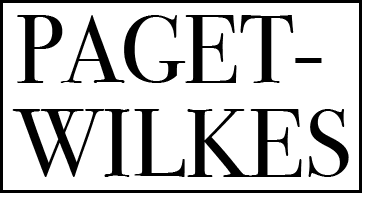Three excerpts from the text that give some sense of the basic thrust of the book.
As an intro to these excerpts—The first era runs from Pentecost to Emperor Constantine in 313 AD. The second era runs from the time of Constantine to the Enlightenment.
Then we pick it up on page 104/5, the intro to chapter 6- the Third era, (The fourth era is the post-millenial/Third Decade period).
The third era of Western civilization is dominated by the way Enlightenment thinking overshadowed the Christian faith in the west; culminating with postmodernism and the technocentric fourth era of the millennium period. As Bosch states, this third era is described as being when “The unshaken massive and collective certitude of the Middle Ages has indeed entirely vanished,”1 and then he notes that “Its dominant characteristic . . . is its radical anthropocentrism.”2 The church is no longer the prime source of meaning: it has lost its position of power and status in society to the emerging life sciences/humanist explanations that followed.
So what are the key attributes/issues that arise as this era leads us into our own time and the challenges of this fourth era? Others have identified the main issues of the Enlightenment, but I would like to draw attention to four issues/disjunctions in particular that are of increasing
significance between church and society. I will then follow these four issues/disjunctions into the fourth era.
The first issue centers around the concept of power and the association of the church with the institutional, political, societal, and philosophical powers of the day, as compared with Jesus’ insistence on the power of vulnerability and suffering.
The second centers around the hierarchical structures of the church as compared to the networking digital communication medium of the information age, and the differences between a cerebral, reasonable articulation of orthodox faith and the more experiential, intuitive, innovative, personal, and diverse expression of faith often seen in contemporary life.
The third issue is the disjunction between the traditional, hierarchical, threefold order of ministry, and the diversity of the ministry of the baptized, the personal experience of the Holy Spirit, and the blossoming of local community networking faith groups.
The fourth issue is the balance between the church being contextual and being countercultural, between the faith/church being contextual to every different culture within which it exists, as compared to the countercultural prophetic role which the gospel ought to reflect to any surrounding addressing a critique that the church lacks confidence in this prophetic, context; countercultural role.
These four issues are followed through enlightenment liberal humanism, the Industrial Age, postmodernism, and on into our own digital age of information, uncertainty, and complexity.
The second excerpt is from the Intro to part 3 on page 161.
We have entered a postmodern world where everything is relative, depending on where we stand and how we participate; where a plurality of cultures envelop our global family; where complexity arises from the interdependence of so many surrounding factors; where globalism is opposed by local interests and individual objectives; where over-optimistic expectations of the future are challenged by the pessimism of disjunction; where competing interests compound decision-making for each successive generation.
Secondly, we face technocentric development set on an exponential curve that has no end point, giving rise to a whole set of fresh issues and questions that have no easy resolutions, and expectations that can’t be delivered for the benefit of all.
Thirdly, we are surrounded by the inadequacy of the anthropocentric, humanist mindset as it seeks to come to terms with an increasingly technocentric ethos. At the same time, we see capitalism as we know it dissolving into a data-centric, surveillance capitalism where the global holders of tech development overwhelm governmental democracy.
It is in this melting pot of change, this paradigm shift of experience, this lack of universal ethical moral values, this complexity/interconnectedness of what it means to be real/human, that the faith/church is having to rediscover its belief, its direction, its empowerment. It is within this materialistic, success-oriented, mechanistic, machine-centered Western society that the faith/church has to reimagine the centrality of the creator Other, holding values of love, personal relationships, and a purpose for the whole of humanity
The third excerpt comes from the start of the conclusion/postscript on page 270.
The introduction of this book draws attention to a line from a poem by W. B. Yeats, “Things fall apart: the centre cannot hold,” and asks whether there is relevance in it for the situation facing the church today.
Can the center hold? Will the center hold? Should the center hold? The journey of this book suggests that some form of modal rump, within the large city/towns, its suburbs and environments, could well survive. Alternatively, instead of fighting for institutional order/identity, the churches could accept that the center will not and should not hold, that a new form—new wineskins—of church could now become more appropriate.
The fourth excerpt is the final sentence of the book on page 272.
This book calls on the generations of tomorrow to believe, reflect and act, within their local communities, as inspired and empowered daughters and sons of God, in the knowledge that Jesus Christ provides a radical new paradigm for living through these times of epochal change.

